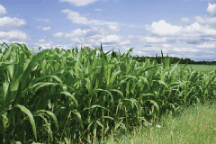Generic products are altering the competitive landscape in the industrial vegetation management (IVM) market. Not only have generic products forced branded companies to reduce their prices, or otherwise risk loosing market share, but have also reduced the value of the overall market. However, even with the bar high on price competition, there remains ample opportunity to command a strong market position with the right blend of innovation and service delivery.
Most IVM segments are experiencing declines in sales due to price competition rather than from actual decline in consumer demand, but the overall market decline is not significant. An exception is the forestry sector, where decline in demand has been significant due to the slow-down in the housing market. Sales in the forestry segment dropped a whopping 25% in 2009.
Sales in industrial vegetation management are dominated by herbicides, which make up 95% of the total U.S. market which is valued at about $500 million at the manufacturer level. Range and pasture is the largest market segment, followed by forestry and roadways.
Key drivers in the market differ by segment, as each segment is often affected by completely different sets of variables. Forestry is closely linked to housing demand, which has taken a hard hit during the economic slump. As less lumber is being cut and sold, the demand for herbicidal products in replanting areas has declined. The right of way segments (railroads, roadways, and utilities) are driven by mandates for safety and uninterupted operation. Liability factors also come into play in areas where vegetation might be obstructing roadway visibility or endangering power lines, for example.
Over the last six years, the IVM market has seen a negative compound average growth rate. On the bright side, things might be looking up over the next five years. It must, however, be noted that the turn around will not be in any way dramatic, as average compund growth rates for this time frame are predicted at a mere 1%. Even this modest growth might proove to be optimistic.
Under these circumstances, the leading brands depend on a time-honored approach to protecting their market share against generic competition. Focus is paid primarily to new formulations, unique premixes, and increased technical support, which is an arena where big brands may be able to differentiate themselves from their generic competition. At the end of the day, however, generics are making a major impact on the IVM market.
Related articles:
Consumers opting for a do-it-yourself approach in the market for pesticides and fertilizers
Generic Products Impact the Industrial Vegetation Management Market
Demographic Trends in the United States Favor Gardening-related Products for the Next 10 to 20 years

